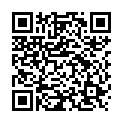|
|
|
| Module code: UI-CAD |
|
|
4V (4 hours per week) |
|
5 |
| Semester: 3 |
| Mandatory course: yes |
Language of instruction:
German |
Assessment:
Project
[updated 22.09.2021]
|
UI-CAD (P251-0014) Environmental Technologies, Bachelor, ASPO 01.10.2021
, semester 3, mandatory course
UI-CAD (P251-0014) Environmental Technologies, Bachelor, ASPO 01.10.2023
, semester 3, mandatory course
|
60 class hours (= 45 clock hours) over a 15-week period.
The total student study time is 150 hours (equivalent to 5 ECTS credits).
There are therefore 105 hours available for class preparation and follow-up work and exam preparation.
|
Recommended prerequisites (modules):
None.
|
Recommended as prerequisite for:
|
Module coordinator:
Studienleitung |
Lecturer: Studienleitung
[updated 09.11.2020]
|
Learning outcomes:
After successfully completing this part of the course, students will be able to:
create standardized technical drawings,
conceptualize structures and technical equipment (machinery),
develop structured plans incl. elevations and sections with the help of a CAD system,
apply the CAD techniques they have learned to projects related to the environment.
[updated 22.09.2021]
|
Module content:
Basic geometric structures
Axonometry and perspective
Introduction to technical drawing
Basics of operating the program, display control
Drawing aids (coordinates, ortho and polar modes, etc.)
CAD-specific drawing techniques
Object-oriented 3D design of components taking into account CAD techniques
Forming the structure of buildings with height nodes, labeling and dimensioning
Drawing organization: Floor plans, views, sections, border lines, title block, 3D model
Applying CAD techniques to environmental issues or projects.
[updated 22.09.2021]
|
Recommended or required reading:
Dubbel (2020). Taschenbuch für den Maschinenbau, Springer-Verlag.
Schneider (2020). Bautabellen für Ingenieure mit Berechnungshinweisen und Beispielen. 24., überarbeitete Auflage, Herausgeber Andrey Albert. REGUVIS Fachmedien.
Brix, M; Petzold, E; Riedemann, C (1994). Kartographische Bearbeitung von Altlasten auf dem PC, Herausgeber Wilfried J. Bartz, Expert-Verlag.
Labisch, S; Weber, C. (2014). Technisches Zeichnen. Verlag Springer Vieweg, 4., überarbeitete und erweiterte Auflage.
[updated 22.09.2021]
|

